The Best Colors to Wear for a Yellow Skin Undertone

Key Takeaways
Understand your yellow undertone and how it's different than **warm undertones** in general. Simple tests like the vein and jewelry tests in natural light can help confirm your undertone before selecting colors.
💫 Discover Your Complete Color Palette
Ready to discover all the colors that make you look radiant? Our comprehensive color analysis will reveal your complete personal palette - perfect for hair, makeup, and wardrobe decisions.
Find My Color Palette →Rich Browns Warm Blondes Vibrant Reds Warm Blacks. Steer clear from ashy, icy, or blue-based shades that can wash out skin and make it appear dull or sallow.
Take advantage of the complementary, contrasting and neutralizing color theory by mixing. Experiment with light lavenders to offset the yellows, cozy beiges for casual wear, and striking blacks for dramatic effect.
Try color selections in multiple light sources since shades move around between sunlight and indoor lighting. Photograph in natural and artificial light to test for unwanted undertones before you commit.
Match color to your lifestyle and hair texture to keep results believable and flattering. Select shades and methods that fit your upkeep schedule and compliment straight, wavy or curly hair.
Design your palette with confidence – by matching hair, makeup and clothing to your undertone. Begin with a slight modification like warm highlights or peachy blush, then adjust according to what makes you feel your most confident.
Top colors for yellow undertones are soft neutrals, cool blues, rich jewel tones, and crisp whites.
Soft beige, taupe and warm gray keep skin bright. Navy, cobalt and teal provide a nice counterbalance without washing out the warmth.
Emerald, ruby and deep plum provide a wonderful contrast and glow. Pure white and cool off-white work better than cream.
Gold jewelry is flattering, and bright silver can play well with cooler outfits. To organize garments quickly, consider cool bases with warm highlights.
Additional advice follows.
📚 Recent Articles
Understand your yellow undertone
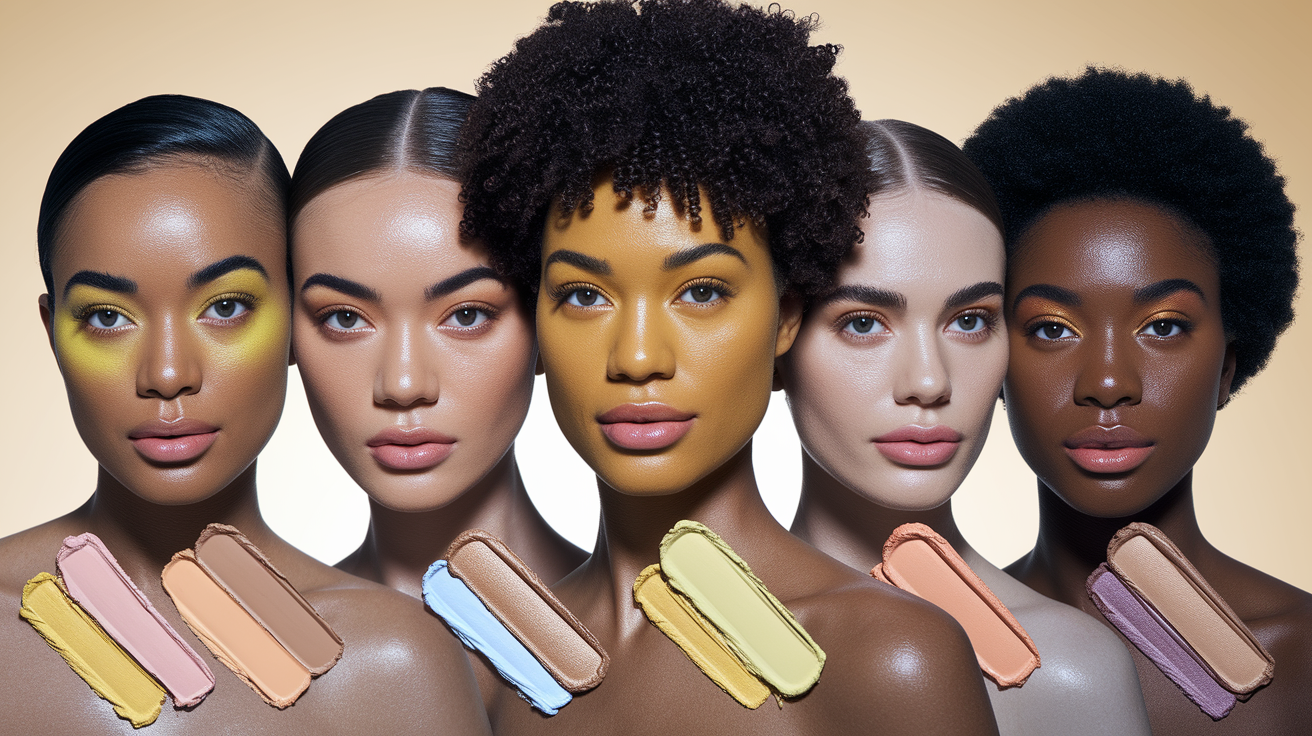
Spot a yellow undertone by the muted gold hue that rests beneath your skin. It can appear as soft golden, peach-gold, or true yellow and remains consistent throughout the year. Your surface tone may tan or brighten with sun or skincare, but the undertone reigns.
This foundation changes how colors appear on you, from shirts to lipsticks, so use it as your guiding light.
Beyond warm
Yellow lives in the warm family, but it's not the entire clan. Warm can also mean peach, orange or red undertones. Yellow is a more pure golden or true yellow base.
On you, this translates to mustard, marigold, and warm beige appearing natural, while tomato red or orange-coral can be too hot or pull ruddy.
Yellow undertones appear throughout skin depths – from very light to very deep – and in olive skin, which frequently combines yellow with subtle green. That mix can mute some shades.
Bright chartreuse or lime can battle with olive's green cast, whereas golden caramel, warm taupe, or teal with a blue base usually counteract it.
Don't think all warm colors work. Aim for specific shades that mirror your base: golden-brown, honey, camel, warm navy, emerald, and soft ivory.
When it comes to makeup, go for bronzers in golden, sun-kissed tones and foundations that say golden, honey, beige, caramel or warm. If you fall between shades, keep in mind that lots of us have hybrid undertones, but one—usually yellow—dominates.
The vein test
Stand next to a window and inspect your wrist veins on bare skin. If they appear greenish you're probably in the warm camp and may lean yellow, blue or purple leans cool.
Mixed blue‑green veins can indicate neutral or an olive composite. Take it as a quick screen, not a verdict.
Pair it with how your skin reacts to color near the face: does warm beige calm redness, or does it go sallow? Experiment with a white tee beside a cream one–cream frequently suits yellow undertones better than a bright white.
The jewelry test
Wear pure gold and silver pieces and observe your face, not the metal. If gold wakes up your skin and adds a soft glow, that bolsters a yellow or warm read.
Silver looking crisper often tells cool instead, while some with olive can sport both, gold still styling more benevolent.
Let the outcome lead decisions. Clothing: camel, butter yellow, forest green, burgundy with brown base, warm navy.
Hair: golden black, honey brown, caramel highlights, warm chestnut. Makeup: golden or warm foundations, peach‑gold blush, champagne or bronze eye, warm red or brick lip for depth.
Best hair colors for yellow undertones
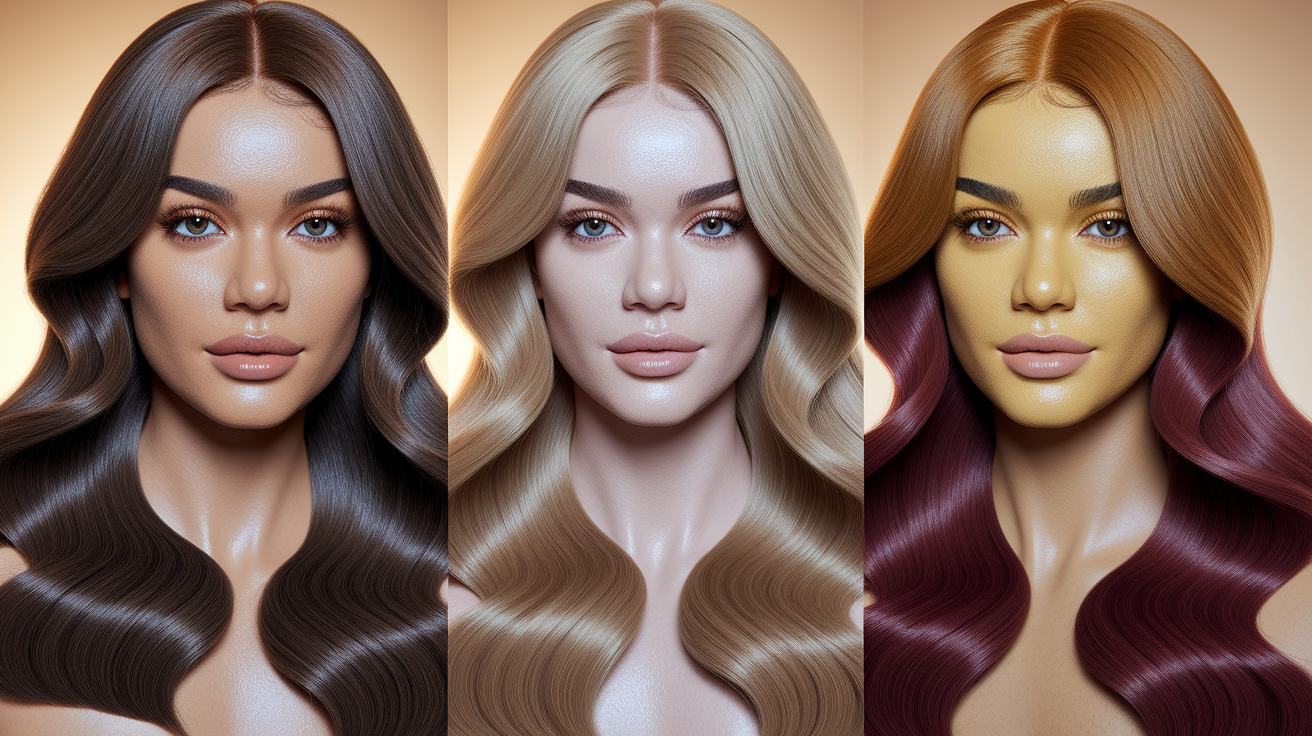
Aim for colors that reflect warmth and reduce yellow tones in your **skin tone**. Rich browns, warm blondes, and vivid reds typically flatter those with a warm undertone. Steer clear of icy, ashy, or blue-based shades that can emphasize a sallow appearance. Select within 1-2 shades of your actual skin tone for a naturally balanced look, considering your overall complexion and hair color.
1. Rich browns
Chocolate, mocha, caramel and golden brown add dimension without dimming warm skin. They reflect the golden cast in yellow undertones, so your face reads luminous not flat. Choose warm, gold or red reflect colours such as chestnut or rich red mahogany to maintain equilibrium with your underlying tone.
Stay away from cool ash browns – they tend to cast a gray veil and aged tired-looking skin. If you're in love with dimension, go for soft golden babylights on top of a mocha base, or mushroom brown reserved to mid-lengths only for a contemporary take on South East Asian **skin tones**.
Rich chocolate and golden brown complement fair to deep skin and go with warm makeup tones.
2. Warm blondes
Honey, golden and buttery blonde offer a sun-kissed lift that enhances yellow undertones of fair, medium and warm dark skin. On fair warm skin, golden blonde, strawberry blonde or golden copper soften redness and add glow.
Pass on platinum and icy ash—they can wash out the face. A lived-in blend works: darker ashy brown roots that fade to warm blonde can be striking, creating contrast while the ends stay bright.
Balance brightness with lowlights of caramel or wheat. This adds dimension, softens grow lines, and prevents the tone from brassy.
3. Vibrant reds
Copper, auburn and warm red give life and a healthy flush. They reflect gold in the skin and complement a broad range of tones. Golden copper and rich red mahogany illuminate fair warm skin; deeper auburns root medium to deep skin.
Dodge blue-based burgundy — it battles the warmth and makes the skin go greenish. If bold is your thing, go for sunset orange or tropical orange for runway-ready effect, particularly on warm, dark skin that can wear high-chroma colors.
4. Unconventional colors
Warm peach, coral or golden yellow come across lively and friendly on yellow undertones. Arctic fox-style warm picks — Cosmic Sunshine (golden yellow) or Sunset Orange — pop without clashing.
Table: Warm unconventional shades and effects
- Peach: soft glow, gentle warmth
- Coral: bright lift, lively undertone
- Golden yellow: graphic, high impact
- Sunset orange: bold, photo-ready pop
5. Deep blacks
Opt for natural black with warm reflect, rather than blue-black. The warm cast prevents the face from appearing stark. On yellow undertones, deep black can be sleek and dramatically beautiful, particularly with soft caramel face-frame pieces.
Match with warm makeup—apricot blush, gold or bronze eye, peach or brick lip—to maintain equilibrium and prevent harsh contrast.
How colors interact with your skin
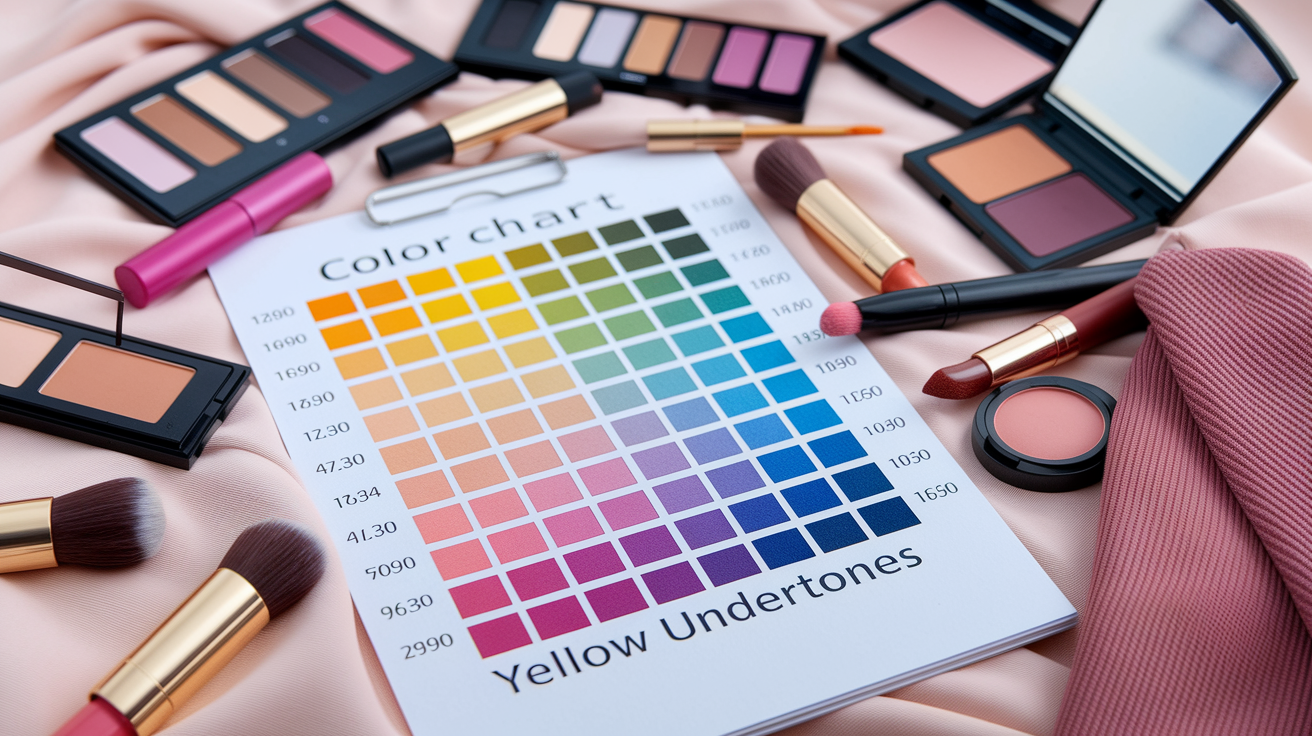
Color sits on your skin like light on water: it can enhance, neutralize, or contrast your yellow skin tone. Undertones are categorized as warm, cool, and neutral, and this blend influences how hair color, makeup, and clothing appear on your overall complexion. Yellow-leaning skin often favors golden hues, but the right flattering colors can steady brightness, while others may dull it. It's about how colors play with your skin, too.
Complementary effect
Employing the color wheel, shades opposing yellow — violet, purple, and blue-violet — calm too much warmth. When considering hair color, think about ash-violet gloss on dark brown or soft lavender beige on blonde. These muted plum rinses on black hair don't read 'purple' in daylight; instead, they tone down brassiness and instill equilibrium in your overall complexion.
For makeup, using complementary colors is a subtle yet powerful style tip. A berry blush slices sallowness without adding a gray cast. Lip colors like plum, wine, or fig bring your lip color forward and prevent the skin from consuming it. On the eyes, cool taupe or eggplant liner sharpens the whites and calms yellow tones in the lid.
If you prefer a gentler approach, opt for sheer lavender highlighter or a lilac color-correcting primer on the t-zone. These products hold warmth while taming the yellow cast. Warm undertones tend to glow in earthy colors like olive or terracotta, and a plum lip can keep those shades vibrant under indoor lighting.
In clothes, a cool violet scarf near the face counterbalances a golden knit. The combination comes off vibrant, not brash, and it keeps the muted tone at bay.
Contrasting effect
Bold contrast makes eyes pop. Deep blue, sapphire and emerald green lie close to the opposite side from yellow and draw the eye to the face. A cobalt shirt, emerald dress or midnight blazer lends crisp edge.
High contrast can agitate yellow, however. Balance it with warm makeup or gold jewelry: peach blush, caramel bronzer, or a honey gloss. The warm notes span the leap from skin to fabric.
Reserve high contrast for those times you want drama—photos, events, editorial looks. Certain individuals shine in brights, while others are more comfortable in muted versions such as storm blue or forest green. The answer is individual and variable, even among like undertones.
Neutralizing effect
Neutral hair colors—warm beige, soft brown, creamy blonde—soften yellow without muting skin. Sprinkle with honey for dimension on medium hues, beige for ash-seeking tresses or a sand glaze to hush brassy.
Clothing neutrals that play well together are oatmeal, camel, stone and warm gray – they allow attention to remain on your features. Neutral makeup creates a natural base. Peachy blush, nude/caramel lipstick and a golden-beige highlight to maintain luminescence.
Those rich golden hues can prevent the face from looking washed out — particularly under cool light.
Quick reference list:
- Hair: beige brunette, sand blonde, honey black, cool caramel
- Eyes: warm taupe, bronze, soft khaki, chocolate
- Lips: peach nude, rose-beige, toffee, terracotta
- Clothes: camel, olive, cream, cocoa, warm navy
Olive skin weaves warm and neutral, so jewel tones and bold brights wear well. Still, sample swatches on your jaw in daylight, as color-skin interplay is tricky. What compliments one warm tone can miss on another.
Colors to approach with caution
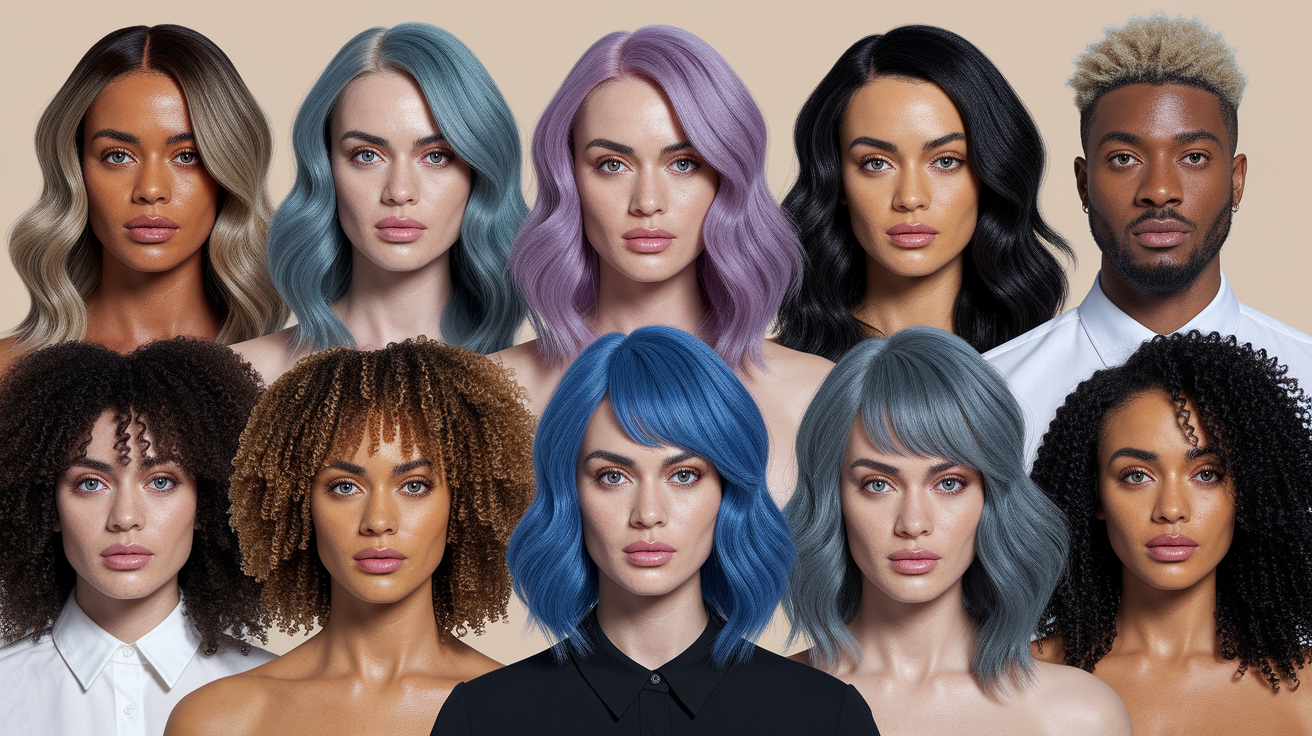
For yellow undertones, certain hues combat your inherent warmth and make skin appear lackluster, sallow, or blotchy. The aim is balance: colors that echo your gold tones without tipping into grayness, frost, or heavy blue. Consider season, your natural hair and eye color and how deep or soft your coloring is.
If your features are soft-muted, very bright colors can overpower. If you're DEEP COOL, watch out for DEEP WARM even with a tan. If you're not sure which color group you fall into, test before you commit!
Ashy tones
Ashy browns, cool grays, and muted blondes can diminish the vitality of those with a yellow skin tone. They mute the golden cast and tend to make individuals look tired, particularly under indoor light. In winter, when many of us lean towards a ghostly appearance, ash can appear even dustier and render skin sallow, especially for those with warm undertones.
Ash works best on cool or neutral skin tones because it complements their undertone. In contrast, it conflicts with warm skin tones. When comparing an ashy beige blonde to a honey blonde, the ash veils warmth, while honey enhances it.
For soft color lovers, opting for sand, beige-gold, or wheat is advisable instead of mushroom and stone. Pale winter peeps should be cautious, ashy tones may fight against their overall complexion.
Icy platinums
Colors to be careful with: Icy platinum blonde, silver or violet casts, form a stark contrast with yellow undertones. That cool sheen has a way of making the skin appear more yellow or blotchy, and it can accentuate redness. Blue-toned toners complicate matters.
A warmer direction preserves the light effect but without the hard edge. Think creamy platinum, champagne, vanilla or butter blonde. These add a gentle radiance that complements gold in the complexion.
Mid-winter, very warm shades can sometimes appear too brassy on some–tweak with a neutral-gold gloss. Soft-muteds should stay away from ultra-bright platinum as it overwhelms more delicate features. If light blues or frosty teals near your face look off, icy hair will too.
Blue-based blacks
Blue-based black (typically called "blue-black" or "soft black with blue reflect") can make yellows pop — in a very harsh way. The cool-blue cast contrasts the warmth of the skin, sometimes reading sallow. This is why blue-black favors cool or neutral skin.
Warm or natural blacks land better. Seek out soft black, off-black, espresso, or black-brown with subtle brown/gold lean. Differences are simple: blue-black reflects navy or ink; warm black reflects chestnut or bronze; natural black sits close to true charcoal without strong overtone.
In winter, very warm blacks tend to turn brassy in low light, so a neutral-warm mix is helpful. If your dominating feature is very cool (icy blue eyes), you can still try blue-black, but cautiously. If yellow-greens or pale blues wash you out in clothing, brace yourself for the same ensuant friction from blue-black hair.
The impact of lighting
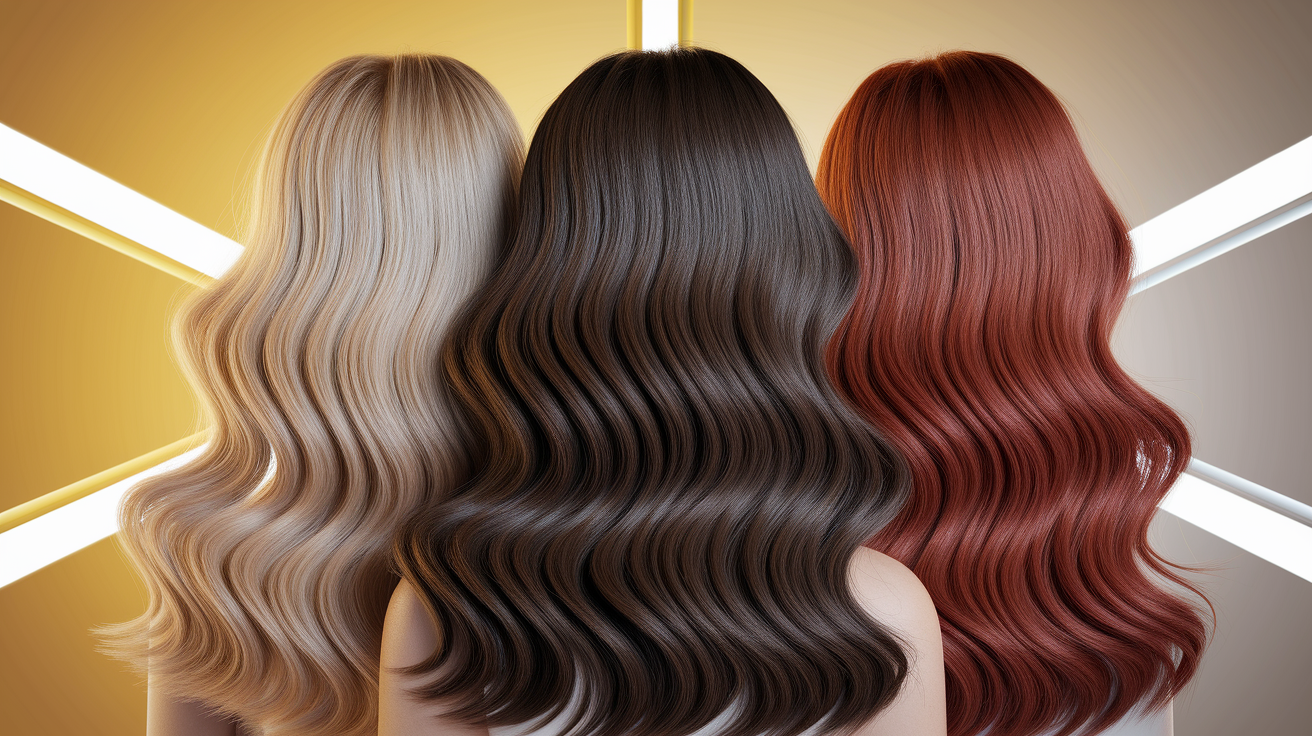
Lighting changes the way hair color interacts with yellow skin tones, affecting warmth, depth, and vibrancy throughout the day. Design for these variations, prototype them, and record your findings prior to implementation.
Natural light
Daylight provides the clearest read of tone. On yellow-based skin, balanced neutrals and soft golden browns tend to appear soft and even, but very warm shades can turn brassy quickly. If you love copper – verify it glows, not orange-turning under the noon sun.
Stand by a window or go outside. Morning light skews warm, mid-day cool and a bit gray, late afternoon warm again. South windows provide the harshest light, north keeps it cooler and softer, east throws warm morning light and west shoots golden rays late in the day. Each way pushes hair toward or away from brass, so follow those changes.
Natural light reveals undertone reality. Ash browns tend to come across crisp and serene at noon but dull by dusk. Beige blondes can appear creamy in the morning and a bit yellow in afternoon sun. Shoot from 1-2 meters, against a clean background, no deep filters. Snap at 09:00, 13:00, and 17:00 to compare.
Keep samples near your face. A strand test or clip-in swatch lets you catch how the color reverberates off your skin. Notice if the competition tugs even or if the hair leans more green or gold beside your neck.
Artificial light
Indoor bulbs shift color temperature significantly, affecting how different skin tones appear. Warm white lamps at around 2700–3000 K add yellow-red hues, which can make blondes and coppers look richer but may also introduce brassy notes. In contrast, neutral or cool bulbs around 4000–5000 K add blue tones, muting gold and pushing ash tones grayer. Higher Kelvin readings indicate cooler light, while lower Kelvin readings suggest warmer light, impacting your overall complexion.
Some rooms can add unexpected tints that alter the perception of your skin color. Office LEDs often have a cool edge, making beige blonde appear a little ashy. Salon mirror lights are bright and neutral, excellent for catching undertones, but they can be harsher than the warm tones found in home lamps. In bathrooms, warm bulbs can make a cool beige look golden, affecting your choice of flattering makeup colors.
To find the best colors for your skin tone, test in three spots you use most: salon chair, home bathroom, and your work or study area. If a shade seems honey-warm at home but appears orange at dinner beneath dim, warm bulbs, request a cooler glaze or mix in a neutral lowlight to stabilize it. These little formula adjustments can frequently cure large lighting fluctuations.
When in doubt, maintain a photo log under both daylight and your typical indoor bulbs to evaluate how different shades interact with your skin tone. Then, pick the shade that remains consistent across the majority of scenes, ensuring a harmonious color match for your personal style.
Beyond the color swatch
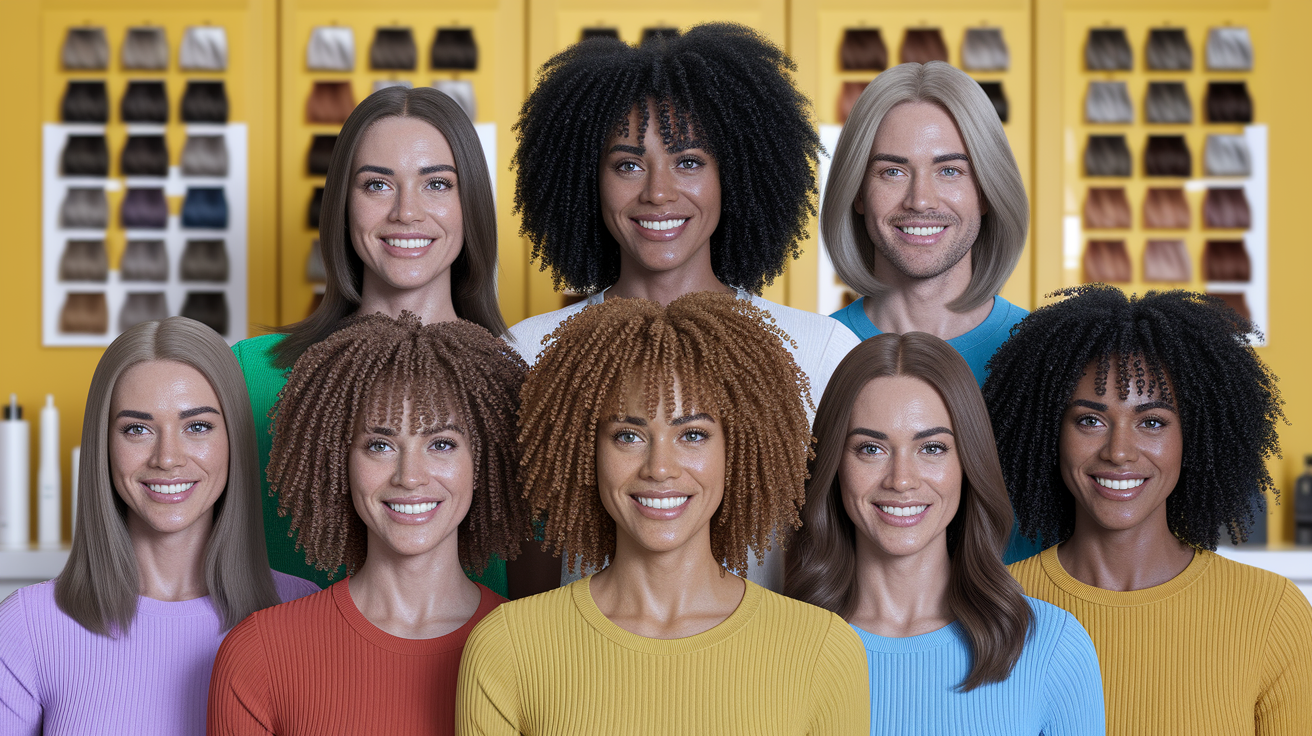
Smart color choices for yellow undertones begins with context, not a swatch. Mixed colors have a mass tone you sense initially and a hushed undertone you detect subsequently. Place a swatch beside bone white or a color wheel, and secret undertones appear.
Light alters things as well—yellow incandescent light warms, green fluorescent light cools, daylight remains neutral. Skin undertones—warm, cool, or neutral—define how a shade reads on you. While checking wrist veins or your natural glow offers clues, it's largely a subjective measure.
Hair texture
Texture alters the manner in which color interacts with light. Straight hair shines like a mirror, so golden beige or soft caramel can appear more luminous on yellow undertones. Wavy hair diffuses light, which smooths and softens edges.
Sand blonde, honey bronde, or muted chestnut appear worn-in and tranquil. Curls soak up and refract light in loops, so shades can intensify. Imagine toffee, amber brown, or espresso with warm highlights.
Dimension highlights motion. Experiment with balayage honey on waves, face-frame butter blondes on straight hair or cinnamon lowlights through curls to avoid a flat cast. Two or three shades, a half-step apart, appear natural across light changes.
Work with a colorist who understands techniques like curved balayage for coils or micro-foils for fine straight locks — technique matters as much as shade.
Maintenance level
When choosing hair color, it's essential to match the tone to how frequently you can chair sit. For a low-maintenance option, select colors that blur roots, such as warm bronde smudge or soft black with warm gloss, which beautifully complement yellow skin tones. These shades fade nicely and require fewer salon visits, approximately every 10–12 weeks.
However, trips to the salon are necessary for high-saturation selections like butter blonde or rose gold, which look stunning on those with warm undertones but demand regular toning and gloss. Intensity fades quickly on a toned person, with roots emerging in just 4–6 weeks.
To maintain your color at home, use sulfate-free wash and UV filters, along with a monthly warm gloss to keep brass in check. This approach ensures your hair color aligns with your schedule and budget while remaining true to your original hue.
Personal style
Let your style take the cue. Classic leaners thrive with toasted hues—wheat blonde, caramel or mocha—mixed in with your current neutrals. If your closet adores black, white and camel, a warm beige blonde will be reminiscent of crisp lines.
Bold tastes shine with placement: amber money piece on deep brown, copper melt over bronde, or cocoa base with gold micro-babylights. Try your favorite scarf or jacket — hold it near your face in daylight and then hold it up under indoor light and watch any shifts.
Mix and match within reason–mass tone warm, undertone neutral–to maintain harmony with yellow skin undertones while still feeling like yourself. Comfort is the signal – if you exhale when you look at it, you nailed it.
Conclusion
To discover shades that love yellow undertones, believe in tiny trials and pure light. Swatch against your face. Check shade shifts in daylight, shade and indoor bulbs. Notice how warmth brightens or mutes your skin. Hold on to what looks fresh. Avoid anything casting gray or sallow.
Reality check, aid. Take a quick pic in sun and in shade. Have a friend. Then take the plunge. Have a color in mind? Post it, and have a fast read before you color or purchase.
Frequently Asked Questions
How do I know if I have a yellow undertone?
Check your wrist veins in natural light. If they look greenish and gold jewelry complements you, you probably have a warm undertone, indicating a yellow skin tone. This means your skin tans easily and seldom appears pink, making it essential for a professional color analysis to determine your best colors.
What hair colors flatter yellow undertones?
Warm tones are best for those with a yellow skin tone. Consider honey blonde, golden blonde, caramel, warm chestnut, or copper, while avoiding ashy shades that can wash out your overall complexion!
Which clothing colors look best on yellow undertones?
Select warm, saturated tones like olive and camel, which complement various skin tones. Mustard, rust, coral, and tomato red are also flattering colors. Try cream and ivory near your face to see if your overall complexion appears more luminous.
Which colors should I approach with caution?
Cool, icy shades can swamp you, especially for those with a warm undertone. Watch out for icy pastels and blue-based pinks; instead, ground your look with warm hues, flattering makeup, or a warmer layer near your face.
How does lighting change how colors look on me?
Lighting changes undertones, so warm artificial light enhances warm hues while cool daylight reveals true tones. Always try hair color, makeup, or clothing in natural light for the best results and flattering colors!
Can yellow undertones wear black and white?
Yes, with modifications. Choose soft black or charcoal instead of jet black. Select cream or ivory rather than bright white. Incorporate warm hues like gold jewelry, a camel blazer, or a rust scarf to maintain balance and warmth.
What makeup undertones match yellow undertones?
Use warm or neutral-warm bases to complement your overall complexion. Choose foundations that are warm, golden, or olive in color. Opt for peach or coral blush, warm bronzer, and gold or copper eyeshadows for flattering makeup colors.